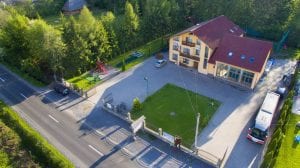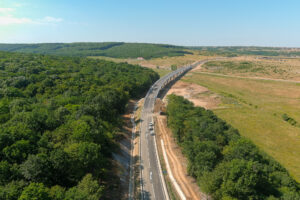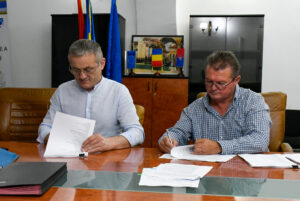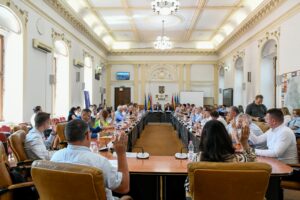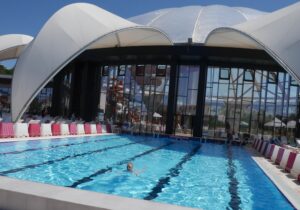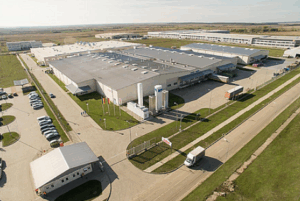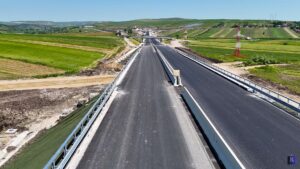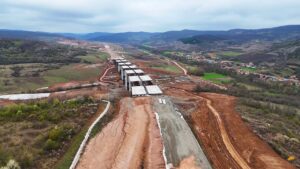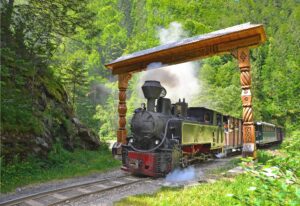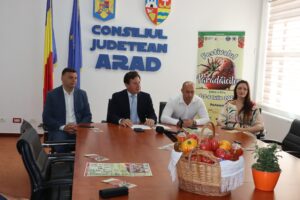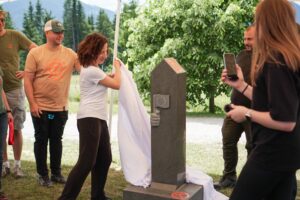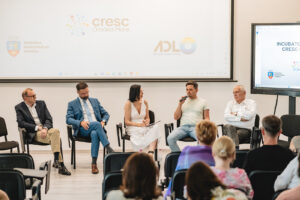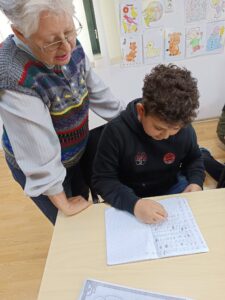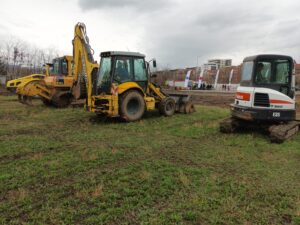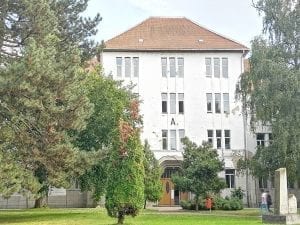For an outsider who has not yet visited Romania and did not study this European region’s history, Transylvania either lacks representation, or it has an ambiguous, indistinct one.
In some cases that representation may be associated with Romania’s general image, in other cases, on the contrary, it may be detached from it, autonomized or connected to the medieval and modern Hungarian and Austrian history. These differences derive from the primary data, the most accessible, searching on the internet to get a first idea. In such cases, Transylvania is an image, a cliché, an approximately adequate artificial representation, and not a geographic, historical, ethnographic, cultural and anthropological reality defined by its specific character. We intend to start from these very clichés or approximate representations of Transylvania and to go step by step towards its detailed realities, in order to reconstruct the correct, recognizable image, with what makes it peculiar in the Central European context. The long historical connections with Vienna and Budapest have influenced both the Transylvanians’ identity construction and their European image. This identity has its specific characteristics in relation to the Romanian, Hungarian or German peculiarities identifiable in the Transylvanian culture, history and space. When speaking about the Transylvanian Saxons, Swabians, Szeklers, Hungarians, Romanians, Armenians, Jews, Slovaks, Ukrainians, Serbs, the common element is the Transylvanian, not the ethnic one, built from manifold identity traits not from ethnic data, but carried out through the so-called habitation. This term has very complex significances, from the actual settlement on a territory, domain, property, to the construction of a habitat (houses, cities, towns, churches), and the behavior’s ingenious creativity in a certain space. As an example, the Teutonic Knights were only present for 14 years in Țara Bârsei (Burzenland) between 1211-1225, but the concept of the fortified fortress introduced by them and put into practice in the five fortresses they built was a revolution in the architecture of that time, and, by generalizing their model, it favored the salvation of the Transylvanian communities in the wars with the Tartars and the Turks. In a decade and a half, the Teutons have “modernized” defensive constructions in the kingdom, introducing an inhabiting manner that has lasted since then throughout Transylvania’s history. Another example within reach is the presence in the 13th century of the Cistercians, who had only one settlement, the abbey of Cârţa, but by this they introduced the Gothic into Transylvania’s ecclesiastical architecture, at their turn introducing a way of inhabiting. The Jesuits created in Cluj and Alba Iulia the first universities in the 16th century, which means a manner of habitation as well. So are the Armenians, so are the Jews. Even religious beliefs are, profoundly, types of inhabiting the world. Their succession and coexistence has enriched Transylvania’s spiritual history.
From this perspective, we will refer to the Transylvanian inhabitants throughout its history, in other words, those who have settled on these territories, built villages and cities, fortresses, cathedrals, schools, made regulations and laws, administration and culture in the broadest sense. We rather prefer the term habitation to that of belonging because the former has the original meaning of a civilizing factor, while the second is strictly administrative. Since then, certain inhabitants of Transylvanian areas have meanwhile disappeared, such as the Swabians, Saxons, Armenians, Jews in large proportions, but who continue to preserve civilization and culture here. Inhabiting this space, they have imprinted a specific matrix, peculiar style and their own way of being in the world. Transylvania has become what it is by the historical conjugation of the inhabiting manners brought here by the Romanians, Cumans, Bulgarians, Szeklers, Saxons, Hungarians, Jews, Ruthenians, Slovaks, Armenians, Ukrainians and others, which have been preserved, regardless of the administrative forms that have succeeded.
Multiethnic secular cohabitation in the same area has produced direct or implicit acculturation phenomena, influences and contamination of national identities, so that one can speak of a “Transylvanian” national characteristic beyond the national or ethnic one, a certain type of Transylvanian civilization composed precisely from the historical determinant merging of the populations of this territory. In other words, a peculiar image of habitation.
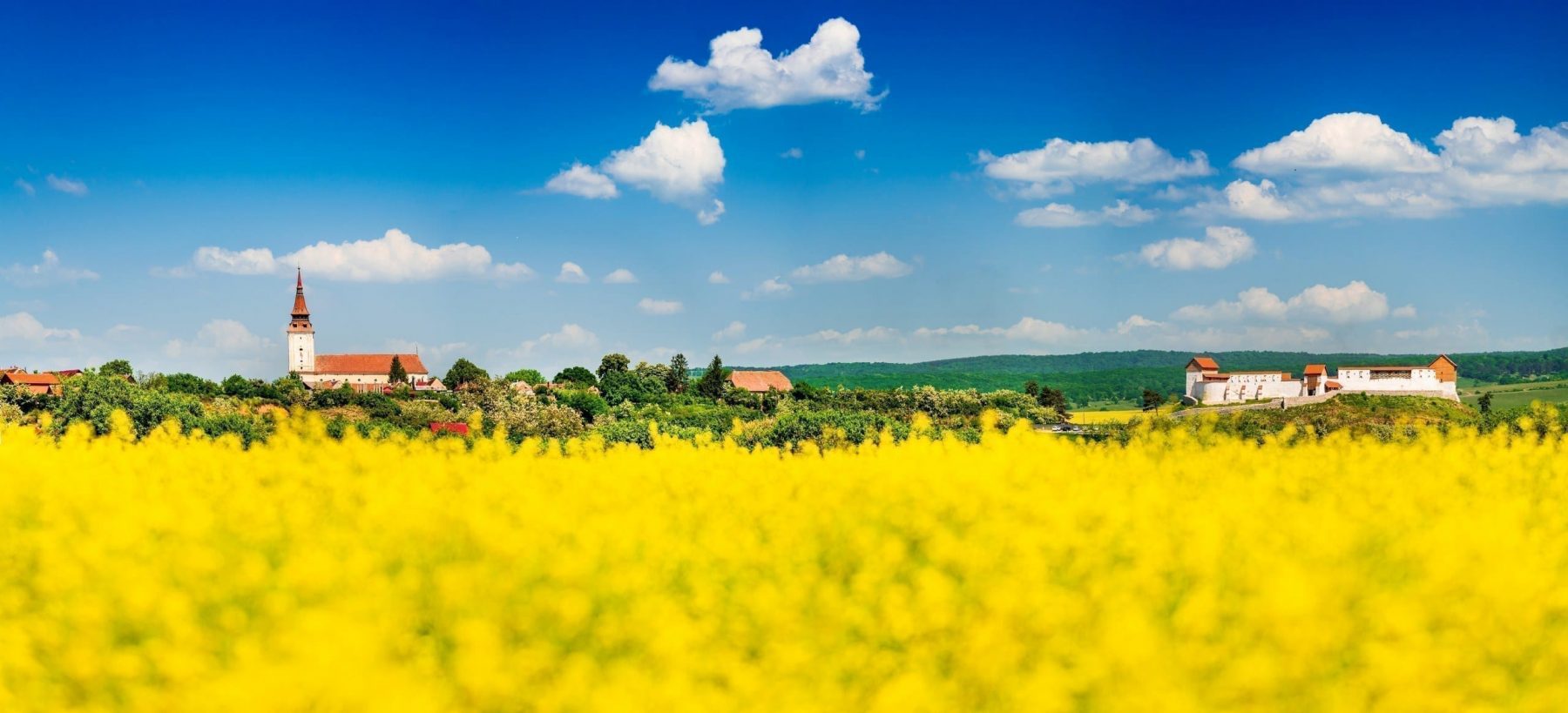
Legend, mystification
The popularity gained by Dracula’s legend, where literature and cinema have successfully collaborated, has turned Transylvania into a fabulous realm. The writer Bram Stocker, directors F.W. Murnau, Tod Browning, Terence Fisher, Paul Landres, Werner Herzog, Erle C. Kenton, Roy Ward Baker, Dan Curtis, Francis Ford Coppola, Michael Almereyda and others have nourished the popular appetite for Dracula’s legend, and this phenomenon lasts even today. Even though the myth of “Dracula” does not make a good introduction, it opens nevertheless a theme, a form of curiosity towards Transylvania. The Dracula “brand” has been internalized and exploited for advertising, so that a former Tourism Minister had even an initiative to create a “Dracula Park”, where visitors could experience terrifying sensations, traveling through the Count’s legend, but the project has never been put into practice. Therefore, before having arrived in Transylvania, the foreign traveler, the tourist becomes acquainted with its legend and he is thrilled by the prospect of meeting with the immortal Count Dracula’s realms.
History
Transylvania (Ultrasilvania, in Latin, Erdély, in Hungarian, Siebenbürgen, in German), like a multifaceted diamond, changes its appearance after the angle from which it is viewed, but also after the light in which it is placed. From an anthropological and cultural perspective, differences enrich the space in which they proliferate. The co-habitation of the Transylvanian nationalities in medieval and imperial formulas over time has left ample space for interpreting the relationships that create communities, those of belonging and domination. From the Dacian territory, Roman province, Hungarian colony, autonomous principality tributary to the Ottoman Empire, Habsburg province and until it has become part of Romania, Transylvania has passed through more than two millennia of known history, which left its traces in language, religion, culture, administration and the lifestyle of its inhabitants.
The one who contemplates it from the outside, simply curious, tourist or visitor, is struck by the wealth and cultural diversity well placed in established stylistic frameworks, specific to the ethnicities that had lived here in the last thousand years – Romanians, Hungarians, Germans, Szeklers, Jews and Armenians mainly. The toponyms of the main geographical areas and of the medieval heritage places have Romanian, Hungarian and German resonance, with the accent shifting over time according to the administrative center – Budapest, Vienna, Bucharest – and the influence of the majority populations. Their identity preserves cultural heritage woven through centuries of multiethnic cohabitation. Transylvania is a form of Central-European cultural memory.
Studying the urban-rural connections, one notices that the urban landscape better preserves the style of the Central European, Hungarian and German Catholic, Reformed, Habsburg peculiarities, while the Romanian genuine features are better preserved in the rural landscape, in the architecture of the wooden churches, of houses, but also in the household type and community habitus. Typical German rural areas, however, represent the best-preserved type of Germanic native habitat in Central Europe. Moreover, some typical Hungarian villages, among which Rimetea, the Alba county, which before the communist period was called Trascău in Romanian and Torockó in Hungarian are considered monuments of traditional rural civilization, among the best preserved and maintained in Transylvania.
The minimum co-ordinates we need for understanding Transylvania are the territory, the population and the local cultural diversity, where, certainly, the spoken languages included.
The territory
In a very strict sense, Transylvania is the territory comprised in the mountain arch, located West of the Eastern Carpathians, East of the Apuseni Mountains and North of the Meridional Carpathians with an area of 57,000 km². In a broader sense, if we include the Maramures, Crişana, Sătmar and Banat areas, we have an area of 100.293 km², which represents about 42% of Romania. Bordered by the mountain chain with Moldavia to the East, and Wallachia to the South, Transylvania has a northern border with Ukraine, in the Transcarpathian region that includes northern Maramureş, to the West with Hungary, and to the Southwest with Serbia. According to the current administrative division, Transylvania comprises the following counties: Alba, Bistrița-Năsăud, Brașov, Cluj, Covasna, Harghita, Hunedoara, Mureș, and Sibiu, as well as parts of Bacău, Caraș-Severin, Maramureș, Neamț, Sălaj, Suceava, and Vâlcea. The traditional ethnographic areas of Transylvania are: Țara Bârsei (Burzenland), Țara (Land) Buzaielor, Țara Chioarului, Țara Făgărașului, Țara Hațegului, Țara Hălmagiului, Țara Mocanilor, Țara Moților (German: Motzenland), Țara Năsăudului, Țara Oașului (Hungarian: Avasság), Ținutul Pădurenilor, Ținutul Secuiesc (Szeklerland), Pământul crăiesc (Latin: Fundus Regius, German: Königsboden, Hungarian: Királyföld), Mărginimea Sibiului (Hungarian: Szeben-Hegyalja), Țara Zarandului, and Țara Silvaniei (Sylvania). Each ethnographic area has something characteristic associated with the geographical territory, the landscape, the climate, but also with the local population. The type of house and household, their practical activities for sustenance, language, dialect or accent, clothing, traditional costume bear a specific influence, represent a unique cultural heritage, unfortunately very impoverished or even lost with the modernization or depopulation of the Transylvanian villages.
The population
About 7,221,733 inhabitants live in Transylvania, which represents one third of Romania’s population. As a percentage distribution, 75% of the population is Romanian, 18% Hungarian, and the remaining 7% are Jews, Slavs (Slovaks, Ruthenians, Ukrainians, Serbs), Germans (Swabians, Saxons), and Roma. The highest population density in Transylvania is concentrated in the cities of Cluj-Napoca, Timişoara, Braşov, Oradea, Arad, Sibiu, Târgu Mureş, Baia Mare, and Satu Mare. Of the entire population, the percentage of rural inhabitants varies significantly from one county to another, but the average is of 50%. This population distribution points out certain relevant aspects regarding the economy, society, culture, education, living standards of the population of Transylvania. On the one hand, in certain counties, most of the population is concentrated in the urban centers, where they enjoy better education, better living and working conditions. In the city, economic life is more dynamic, the labor market offers are increasingly varied, the possibilities for qualification and professional reconversion are more accessible. Large cities such as Cluj-Napoca, Timişoara, Braşov, Oradea, Arad, Sibiu, Alba Iulia, Târgu Mureş have become the most dynamic regional development centers, essentially owing to the university activities meant to create a young, educated, qualified, dynamic population, but also due to local government projects and to certain multinational companies’ investments.
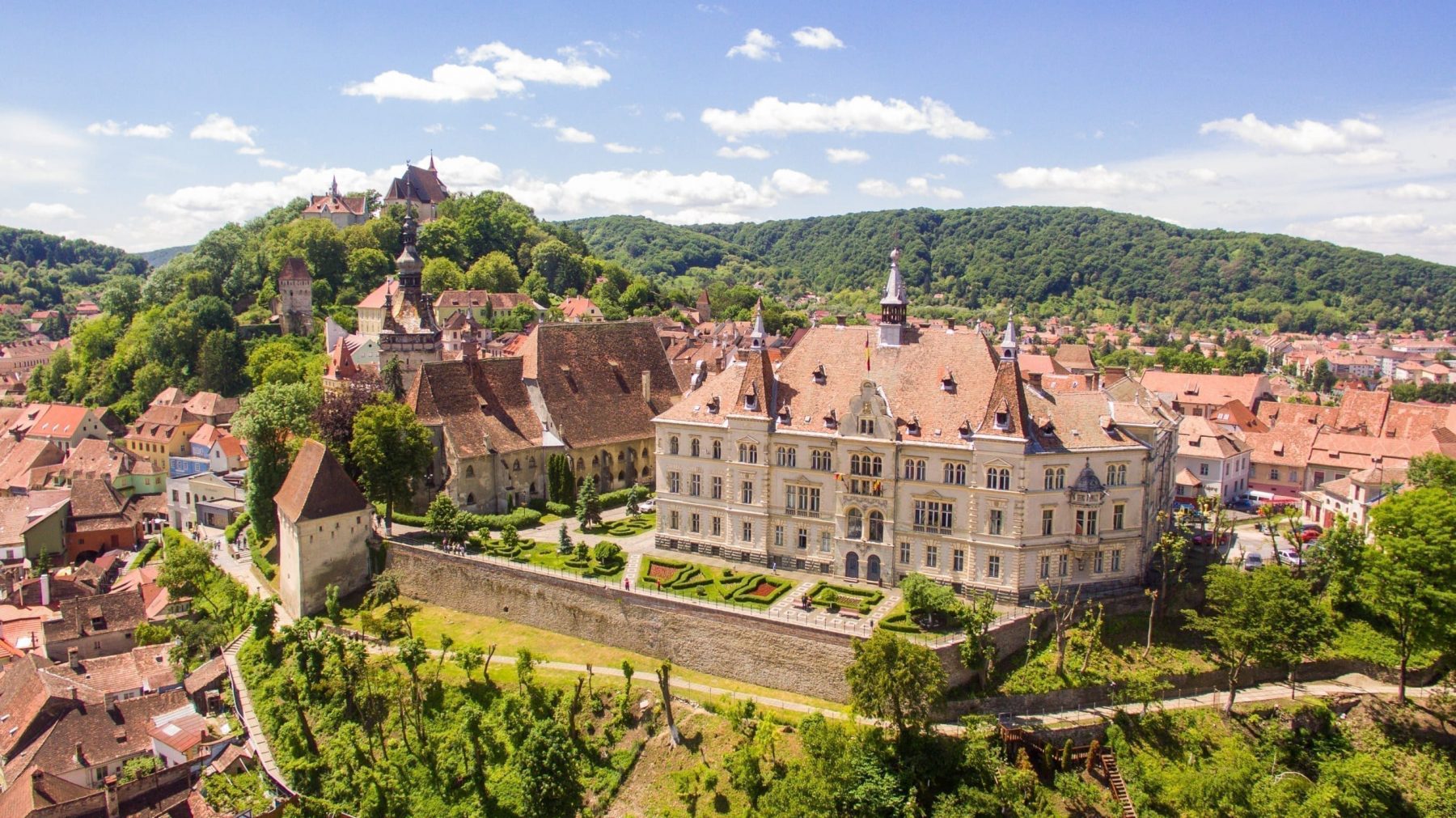
The cultural identity
The cultural identity of Transylvania is bestowed by its diversity, created over long periods of time, with medieval roots if we take into consideration spoken languages and religious beliefs. In the last thousand years, Transylvania’s inhabitants, Romanians, Saxons, Szeklers, Hungarians, Ukrainians or Serbs, and Armenians belonged to one of the important Christian Orthodox and Catholic Churches. Beginning with the 16th century, the Reformation process started in Transylvania, the Hungarian and German population partly adopting Lutheranism or Calvinism. Johannes Honterus, born in Brașov, was one of the Saxons’ most active and efficient religious reformers, and Gáspár Heltai, a Hungarian scholar of German origin, who was the first reformer of Cluj, a Lutheran pastor and translator of the Bible in Hungarian in 1565. Owing to the Hungarian nobility, who adopted Protestantism, a great proportion of the Hungarian population was converted. The two churches, Calvinist and Lutheran, were divided at the Protestant Synod of Aiud in 1564.
The Unitarian Church was established in Cluj-Napoca. David Francisc (German: Franz David, alternatively Davidis, Hungarian: Dávid Ferenc 1520-1579) was its founder and first bishop. Former Calvinist bishop and pastor at the court of the prince of Transylvania, David Francis won the recognition of the Unitarian Church in the Transylvanian Diet of Turda in 1568. Subsequently, David Fracisc was accused of heresy, tried and sentenced to jail. During the reign of the principles Gabriel Bethlen (Hungarian: Bethlen Gábor) and Gheorghe Rakoczi (Hungarian: Rákóczi György), Transylvania became the center of Hungarian culture and humanism, but also the chief bastion of Protestantism in Eastern Europe.
An important phenomenon for the Romanian identity in Transylvania was the birth of the Romanian Church United with Rome (or Romanian Greek Catholic Church), in late 17th century and the beginning of the 18th century. After Transylvania had come under Austrian influence, the Jesuits started a campaign of recovery of the Catholic faith, given that a large proportion of the Hungarian and German population in Transylvania had embraced Lutheranism or Calvinism in the last century and a half. Since the main demographic basin was represented by Orthodox Romanians, the Jesuits tried to draw the Romanians to Rome.
The transition to the Greek Catholic Church (Uniate) was accomplished under Vienna and Rome’s pressure. Representing the Transylvanian Orthodox believers, the Orthodox Bishop Athanasie signed a statement of subordination to the Primate Bishop of Esztergom and to the Pope, pledging to re-ordain the priests. On March 30, 1701, Emperor Leopold I issued the official founding act for the new Romanian Church United with Rome in Transylvania.
In addition to the Catholic, Orthodox, Evangelical-Lutheran, Reformed, and Unitarian churches, there existed the mosaic cult of the Jewish community in Transylvania. The cities of Transylvania also reveal today this complexity of traditional religious culture through their cathedrals, churches, synagogues. An illustrative image today is the central perimeter of Cluj-Napoca, where you can see the Orthodox cathedral, Catholic cathedral, Greek-Catholic cathedral (still under construction), Lutheran, Calvinist churches, David Francisc’s Unitarian church, and some synagogues. The same image of an ecumenical space welcomes us in the centers of other cities, where the churches and cathedrals are, in fact, the most imposing, emblematic monuments: Brașov, Oradea, Alba Iulia, Târgu Mureș, Bistrița, Timișoara, Arad, and Sibiu.
Transylvania is, according to Academician Ioan-Aurel Pop, “the only place in Europe with such a complex cultural and confessional structure”. The fact that so many types of religious and confessional identity have cohabited over the centuries has made the region’s cultural dynamics and wealth possible and has considerably led to the establishment of a social ethic of tolerance, responsibility and work.
By Vianu Mureșan
(From the special edition of TB 86 – „ENJOY TRANSYLVANIA!” – 14 May – 10 June 2019)












